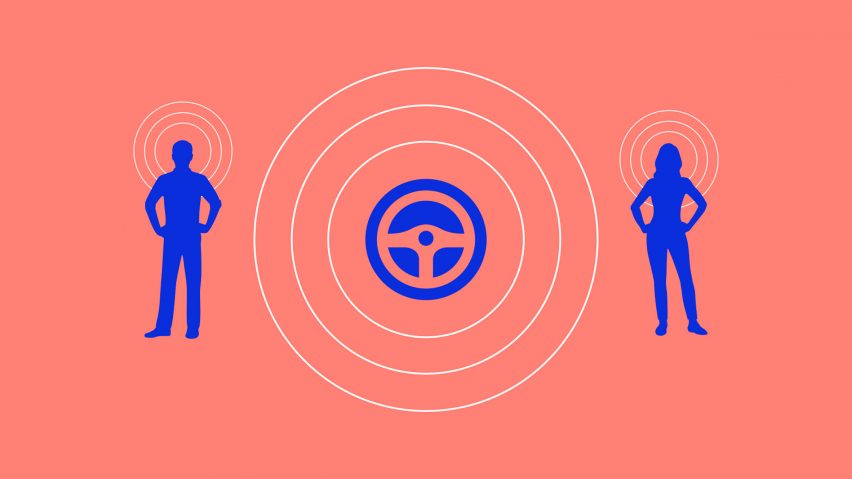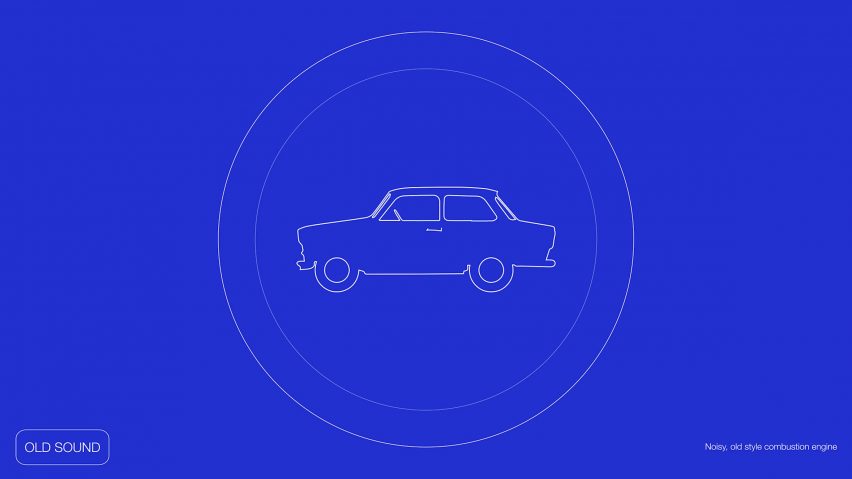Yuri Suzuki composes soundscape for electric cars that adapts to the driver
Pentagram partner Yuri Suzuki has developed a new family of sounds for electric vehicles that hope to replace the "monotonous and annoying" noises made by conventional cars.
Proposed as part of a research project, the soundscape includes two new artificial engine hums that change in pitch depending on the speed of the car, as well as a range of in-car sounds for everything from indicating to starting the ignition.
These are adaptive and change based on the location, time and activity, creating an interactive experience reminiscent of a video game, in which different actions elicit different auditory feedback.

The aim is to make driving more emotive and enjoyable while making notoriously quiet electric vehicles more audible to pedestrians.
"We are in a time of transition between sounds that were merely a byproduct of cars and entering an era of cars that are naturally silent," Suzuki told Dezeen.
"This project started from what we have now and what we are familiar with and then developed the psychological aspect between human and machine."
Suzuki designed in-car sounds to adapt to the vehicle's location
Research has shown that electric cars are around 40 per cent more likely to hit a pedestrian than conventional vehicles, which alert passersby through the familiar sound of their combustion engine.
As a result, automotive manufacturers are now required to fit acoustic sound systems to electric vehicles to make them more easily audible.

Suzuki has proposed two artificial engine sounds to fulfil this function.
The first is more skeuomorphic, meaning it attempts to replicate the low rumble of a traditional engine, while the other has a much higher frequency.
"The second sound is less concerned with sounding impressive or loud but focussed on clarity and safety," Suzuki explained.
The engine sounds rise in pitch to denote acceleration and deceleration
Both versions incorporate a smooth rise and fall in pitch to indicate when the car is accelerating or slowing down.
"How rapidly a pitch increases can give detailed user feedback for the handling of a car's acceleration," the designer added.
"Being able to recognise the speed of a vehicle by its pitch or frequency is both helpful for the safety of other road users as well as for the driver's own."
To avoid contributing to noise pollution, Suzuki was careful to avoid jarring pitch changes in favour of more organic transitions.
Each engine sound incorporates a variety of different frequencies to ensure that it remains audible to those affected by hearing loss across one of these frequency ranges.
"We used a frequency filter to check audibility at all stages of production," Suzuki explained.

The accompanying in-car sounds are adaptive to three different variables: the time of day, GPS and satnav data about the location of the vehicle, and calendar-based information about the habits of the driver.
Using machine learning, the car would play a more chirpy ignition sound in the morning or when going to the gym and a more sultry one when heading out for drinks in the evening, in a bid to create a more personalised driving experience.
In-car sounds such as indicator clicks change based on the time of day
"We were keen to get away from the monotonous and annoying sounds that we are all too familiar with in cars, such as high-pitched reversing sounds, indicator clicks and horns," Suzuki explained.
"Having variable sounds within a car allows the user to have a more positive driving experience, too, allowing for each journey to feel important and for the bond between vehicle and user to develop over time."
The car sounds were created as a proposal
Elsewhere, Oscar-winning composer Hans Zimmer has created a soundscape for BMW's new iX electric car, as well as for the manufacturer's wider EV fleet, incorporating the natural noise created as wind rushes over the vehicle.
In a live Dezeen talk, BMW's head of design Domagoj Dukec explained that Zimmer's composition would respond to the actions of the driver as well as to the car's performance.
"It's more like you can almost compose the music with the way you drive," he said. "It's like you create your own music."